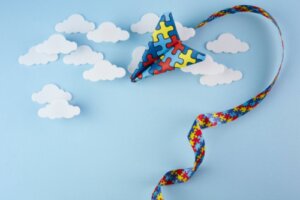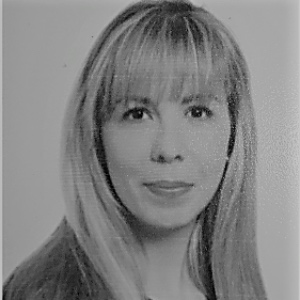Simon Baron-Cohen: Autism Researcher Extraoordinaire


Written and verified by the psychologist Cristina Roda Rivera
The cognitive neuroscientist, Sir Simon Philip Baron-Cohen was born on August 15, 1958. He’s currently a Professor of Developmental Psychopathology at the University of Cambridge (UK) in the Department of Experimental Psychology and Psychiatry. In fact, he’s one of the best-known autism researchers, but also one of the most controversial, due to his wacky ideas, as he calls them.
“Lone Wolf of Autism Research,” “Creative Rebel,” “Public Science Hero,” and “Red Rag for Feminists.” This specialist has been called many things. However, although he may be considered rather daring, he keeps trying to provide significant data for understanding the autistic spectrum.
Simon Baron-Cohen: mindblindness and hypermasculinization
Autistic people often see a lot, but recognize little. Indeed, many of them experience great difficulties in classifying what they see in a spatial/temporal/social context. In the mid-1980s, Baron-Cohen tried to explain this phenomenon with his theory of “mind-blindness.”
Baron-Cohen claims that, unlike typically developed people, those diagnosed as autistic have trouble reading the wishes and intentions of others from their facial expressions and gestures.
An experiment to demonstrate the theory of mind
Baron-Cohen, Alan M. Leslie, and Uta Frith recruited 61 four-year-old children, 14 of whom had autism, 20 had Down’s syndrome, and 27 were clinically unimpaired.
The researchers wanted to try and obtain evidence to support their hypothesis. They showed the little ones a scenario involving two dolls. One of the dolls placed a marble in her basket and left the scene.
While the doll was absent, the second doll moved the marble into its own basket. The researchers then asked the children where the first doll would look for its marble when it returned.
Typically developing toddlers and those with Down’s syndrome realize that the first doll would be unaware of what happened in their absence. On the other hand, many of the children with autism affirmed that the first doll would go to look for the marble in the basket of the second doll.

Brain scan analysis
A whole series of researchers worldwide scanned the brains of healthy and autistic test subjects. They tested them for matching angry and friendly looks with corresponding emotions, identifying voices of acquaintances, and describing the intentions of certain characters in stories.
They discovered that autistic individuals often exhibit less activity in brain regions responsible for processing emotions and language, recognizing faces, or recalling memories.
Indeed, the connections between these areas appear to be weaker in autism sufferers. Instead, there’s often more activity in the region where the objects are processed.
In 2003, Baron-Cohen put forth the controversial thesis that autism is an extreme variant of the male brain. He stated that “Autism is particularly prevalent among boys and men, but is it that boys are more interested in systems? We tested this with newborns.
On their first day of life, we showed them a human face and a mobile and then measured how long they each stared. We found that more girls looked at the face longer and more boys looked at the mobile longer. This suggests that something related to ‘masculinity’ is also related to autism and an interest in systems”.
Testosterone
That ‘something’, Baron-Cohen surmises, is the hormone testosterone. This is due to the fact that male fetuses produce twice as much testosterone as women in the womb. Moreover, prenatal testosterone influences brain development.
When measuring the testosterone level in women who were due to undergo amniocentesis and had their children examined after birth, the higher the prenatal testosterone level, the more autistic traits the children exhibited and the more interested they were in systems.
However, many in the autism field are skeptical of his hypothesis. “It is not clear if the theory predicts that fetal testosterone is sufficient to cause autism or if fetal testosterone levels interact with other markers of genetic vulnerability,” says David Skuse, Professor of Brain and Behavioral sciences at University College London (UK).
Skuse also adds that most of the analyzes conducted by Baron-Cohen’s group are based on mothers’ perceptions of their children’s behavior and not on objective measures.
Autism and synesthesia
Synesthesia is another area of exploration with which Baron-Cohen is linked. Synesthesia is a neurological condition in which a sensation in one modality triggers a perception in another.
He and his colleagues have been the first to use neuroimaging to prove the existence of synesthesia. Baron-Cohen also holds the position of co-editor-in-chief of the journal Molecular Autism.
The idea of autism
Baron-Cohen is quick to dismiss the idea that autism is a mental illness. In fact, he claims it’s both a disability and a difference.
Disability is related to social functioning and adaptation to change. According to this specialist, the autistic child processes information in an intelligent, albeit different way, with attention to detail and the ability to detect patterns. In effect, he likens the way autism looks today to the way being left-handed once looked.
“There are many different routes to adulthood. The profile we call autism could be one of those routes.”
-Simon Baron-Cohen-
Baron-Cohen disagrees that autism and Asperger’s syndrome should be merged under the same diagnosis. Indeed, he defends that the latter should continue as a separate diagnostic entity. He doesn’t believe there are enough studies comparing Asperger syndrome with other types of autism to say there’s no difference between the two.

Current Studies
This scientist didn’t miss the opportunity to win over Psychology Today readers by getting them to be subjects of an online study. In fact, he asked parents with university degrees to visit the www.cambridgepsychology.com website and enter some simple questions about their child’s development.
Then, by compiling enough data, he examined whether there was an association between the parents’ fields of study and the probability of having a child with autism.
He suspected that graduates in systems and the inanimate world, such as mathematics, engineering, or computer science, would be at a higher risk than others for autism.
The dramatic increase in autism spectrum diagnoses like autism and Asperger syndrome in children could also be explained by the fact that more women are now working in technical and mathematical professions and finding similar partners in the workplace
Undoubtedly, this is a daring theory. That said, Baron-Cohen has never shied away from raising unusual hypotheses. Only time and research will prove whether or not he’s right.
The cognitive neuroscientist, Sir Simon Philip Baron-Cohen was born on August 15, 1958. He’s currently a Professor of Developmental Psychopathology at the University of Cambridge (UK) in the Department of Experimental Psychology and Psychiatry. In fact, he’s one of the best-known autism researchers, but also one of the most controversial, due to his wacky ideas, as he calls them.
“Lone Wolf of Autism Research,” “Creative Rebel,” “Public Science Hero,” and “Red Rag for Feminists.” This specialist has been called many things. However, although he may be considered rather daring, he keeps trying to provide significant data for understanding the autistic spectrum.
Simon Baron-Cohen: mindblindness and hypermasculinization
Autistic people often see a lot, but recognize little. Indeed, many of them experience great difficulties in classifying what they see in a spatial/temporal/social context. In the mid-1980s, Baron-Cohen tried to explain this phenomenon with his theory of “mind-blindness.”
Baron-Cohen claims that, unlike typically developed people, those diagnosed as autistic have trouble reading the wishes and intentions of others from their facial expressions and gestures.
An experiment to demonstrate the theory of mind
Baron-Cohen, Alan M. Leslie, and Uta Frith recruited 61 four-year-old children, 14 of whom had autism, 20 had Down’s syndrome, and 27 were clinically unimpaired.
The researchers wanted to try and obtain evidence to support their hypothesis. They showed the little ones a scenario involving two dolls. One of the dolls placed a marble in her basket and left the scene.
While the doll was absent, the second doll moved the marble into its own basket. The researchers then asked the children where the first doll would look for its marble when it returned.
Typically developing toddlers and those with Down’s syndrome realize that the first doll would be unaware of what happened in their absence. On the other hand, many of the children with autism affirmed that the first doll would go to look for the marble in the basket of the second doll.

Brain scan analysis
A whole series of researchers worldwide scanned the brains of healthy and autistic test subjects. They tested them for matching angry and friendly looks with corresponding emotions, identifying voices of acquaintances, and describing the intentions of certain characters in stories.
They discovered that autistic individuals often exhibit less activity in brain regions responsible for processing emotions and language, recognizing faces, or recalling memories.
Indeed, the connections between these areas appear to be weaker in autism sufferers. Instead, there’s often more activity in the region where the objects are processed.
In 2003, Baron-Cohen put forth the controversial thesis that autism is an extreme variant of the male brain. He stated that “Autism is particularly prevalent among boys and men, but is it that boys are more interested in systems? We tested this with newborns.
On their first day of life, we showed them a human face and a mobile and then measured how long they each stared. We found that more girls looked at the face longer and more boys looked at the mobile longer. This suggests that something related to ‘masculinity’ is also related to autism and an interest in systems”.
Testosterone
That ‘something’, Baron-Cohen surmises, is the hormone testosterone. This is due to the fact that male fetuses produce twice as much testosterone as women in the womb. Moreover, prenatal testosterone influences brain development.
When measuring the testosterone level in women who were due to undergo amniocentesis and had their children examined after birth, the higher the prenatal testosterone level, the more autistic traits the children exhibited and the more interested they were in systems.
However, many in the autism field are skeptical of his hypothesis. “It is not clear if the theory predicts that fetal testosterone is sufficient to cause autism or if fetal testosterone levels interact with other markers of genetic vulnerability,” says David Skuse, Professor of Brain and Behavioral sciences at University College London (UK).
Skuse also adds that most of the analyzes conducted by Baron-Cohen’s group are based on mothers’ perceptions of their children’s behavior and not on objective measures.
Autism and synesthesia
Synesthesia is another area of exploration with which Baron-Cohen is linked. Synesthesia is a neurological condition in which a sensation in one modality triggers a perception in another.
He and his colleagues have been the first to use neuroimaging to prove the existence of synesthesia. Baron-Cohen also holds the position of co-editor-in-chief of the journal Molecular Autism.
The idea of autism
Baron-Cohen is quick to dismiss the idea that autism is a mental illness. In fact, he claims it’s both a disability and a difference.
Disability is related to social functioning and adaptation to change. According to this specialist, the autistic child processes information in an intelligent, albeit different way, with attention to detail and the ability to detect patterns. In effect, he likens the way autism looks today to the way being left-handed once looked.
“There are many different routes to adulthood. The profile we call autism could be one of those routes.”
-Simon Baron-Cohen-
Baron-Cohen disagrees that autism and Asperger’s syndrome should be merged under the same diagnosis. Indeed, he defends that the latter should continue as a separate diagnostic entity. He doesn’t believe there are enough studies comparing Asperger syndrome with other types of autism to say there’s no difference between the two.

Current Studies
This scientist didn’t miss the opportunity to win over Psychology Today readers by getting them to be subjects of an online study. In fact, he asked parents with university degrees to visit the www.cambridgepsychology.com website and enter some simple questions about their child’s development.
Then, by compiling enough data, he examined whether there was an association between the parents’ fields of study and the probability of having a child with autism.
He suspected that graduates in systems and the inanimate world, such as mathematics, engineering, or computer science, would be at a higher risk than others for autism.
The dramatic increase in autism spectrum diagnoses like autism and Asperger syndrome in children could also be explained by the fact that more women are now working in technical and mathematical professions and finding similar partners in the workplace
Undoubtedly, this is a daring theory. That said, Baron-Cohen has never shied away from raising unusual hypotheses. Only time and research will prove whether or not he’s right.
All cited sources were thoroughly reviewed by our team to ensure their quality, reliability, currency, and validity. The bibliography of this article was considered reliable and of academic or scientific accuracy.
- Baron-Cohen S. et al. (1985) Does the autistic child have a “theory of mind” ? Cognición, 1, 37-46. https://www.sciencedirect.com/science/article/abs/pii/0010027785900228?via%3Dihub
- Baron-Cohen, S., & Wheelwright, S. (2004). The empathy quotient: an investigation of adults with Asperger syndrome or high functioning autism, and normal sex differences. Journal of autism and developmental disorders, 34(2), 163–175. https://doi.org/10.1023/b:jadd.0000022607.19833.00
- Departamento de Psicología y Psiquiatría de la Universidad de Cambridge. https://www.cambridgepsychology.com/login
- MedlinePlus. Amniocentesis (análisis del líquido amniótico). https://medlineplus.gov/spanish/pruebas-de-laboratorio/amniocentesis-analisis-del-liquido-amniotico/#:~:text=La%20amniocentesis%20es%20una%20prueba,al%20feto%20durante%20el%20embarazo.
- Molecular Autism. https://molecularautism.biomedcentral.com/about?gclid=Cj0KCQjwma6TBhDIARIsAOKuANyu1icMaNWuLjhMclaY9eL4WuwosB8zhITcoYb9PbsDkf1D9zgROCQaAkvVEALw_wcB
- UCL Instituto de Salud Infantil. Profesir David Skuse. https://www.ucl.ac.uk/child-health/people/skuse-david
This text is provided for informational purposes only and does not replace consultation with a professional. If in doubt, consult your specialist.







